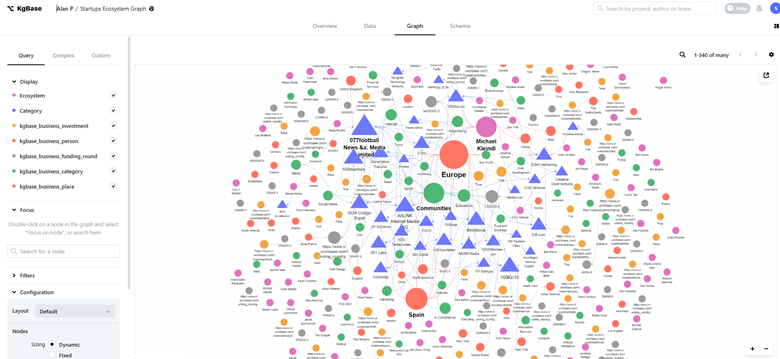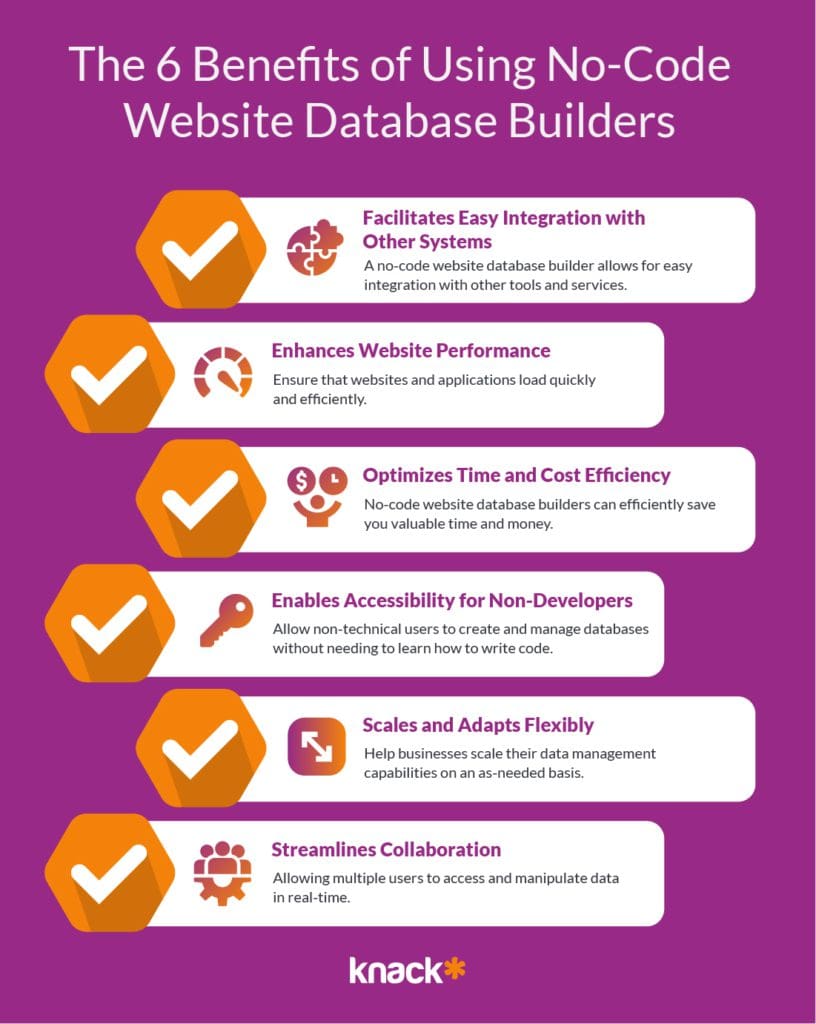Simplify Open System Data Source Creation with No-Code Development Platforms
Wiki Article
A Comprehensive Overview to Implementing Scalable Databases Without the Need for Coding Experience
In the modern landscape of data monitoring, the ability to execute scalable databases without coding competence is becoming significantly crucial for companies of all sizes. What are the important aspects that can truly encourage these individuals to utilize scalable databases properly?Comprehending Scalable Data Sources
In the realm of modern-day data monitoring, scalable databases have actually emerged as a critical option for organizations looking for to handle boosting volumes of info successfully. These databases are developed to suit growth by enabling the seamless addition of sources, whether through horizontal scaling (adding much more devices) or upright scaling (updating existing devices) This versatility is important in today's fast-paced electronic landscape, where information is generated at an extraordinary rate.Scalable databases commonly utilize dispersed architectures, which allow information to be spread across several nodes. This circulation not just improves efficiency yet also offers redundancy, making sure information schedule even in case of hardware failures. Scalability can be a crucial variable for numerous applications, consisting of e-commerce platforms, social media sites networks, and large data analytics, where individual need can vary dramatically.
Additionally, scalable data sources usually include durable information uniformity versions that balance efficiency and reliability. Organizations must consider their particular demands, such as read and write speeds, data integrity, and mistake resistance when picking a scalable data source option. Eventually, comprehending the underlying principles of scalable databases is important for services aiming to flourish in a progressively data-driven globe.
Secret Functions to Search For
When examining scalable data sources, a number of essential features are paramount to making certain optimum efficiency and integrity. Take into consideration the design of the database. A distributed design can improve scalability by enabling data to be saved across multiple nodes, promoting smooth information gain access to and processing as need boosts.Another essential function is data partitioning, which makes it possible for effective management of huge datasets by splitting them right into smaller sized, more convenient pieces (no-code). This strategy not only improves performance but additionally simplifies source appropriation
Furthermore, look for durable replication abilities. This attribute makes sure data redundancy and high schedule, reducing downtime throughout upkeep or unforeseen failings.
Performance tracking tools are also necessary, as they give real-time understandings right into system health and functional performance, permitting timely changes to maintain ideal efficiency.

User-Friendly Data Source Tools
Simpleness is a critical component in the style of user-friendly data source tools, as it enhances accessibility for customers with varying degrees of technical competence. no-code. These tools focus on intuitive interfaces, making it possible for customers to create, take care of, and inquiry data sources without needing extensive programming expertiseKey attributes usually consist of drag-and-drop performance, aesthetic data modeling, and pre-built layouts that simplify the configuration procedure. Such tools usually provide led tutorials or onboarding processes that promote user involvement and minimize the learning advice contour. In addition, seamless combination with preferred data resources and services makes certain that users can quickly import and export information, further simplifying procedures.

Moreover, durable support and neighborhood resources, such as discussion forums and paperwork, enhance the customer experience by supplying support when required. In general, user-friendly database devices empower companies to harness the power of scalable databases, making information administration accessible to every person included.
Step-by-Step Application Guide
Just how can organizations properly execute scalable data sources to satisfy their expanding data demands? The process starts with identifying certain information demands, consisting of the volume, range, and velocity of information that will be refined. Next, organizations must evaluate straightforward data source tools that use scalability attributes, such as cloud-based options or managed data source services.When the appropriate tool is chosen, the following step includes setting up the database atmosphere. This consists of establishing up instances, defining individual permissions, and developing information frameworks that align with service purposes. Organizations should then migrate existing information into the brand-new system, guaranteeing information honesty and minimal disruption to operations.
Post-migration, carrying out thorough screening is vital; this includes performance testing under different tons problems to make sure the system can take care of future development - no-code. Furthermore, it is very important to educate team on the data source monitoring user interface to facilitate smooth usage
Finest Practices for Monitoring
Reliable monitoring of scalable data sources needs a calculated technique that focuses on continuous find more information surveillance and optimization. To attain this, companies must carry out durable tracking tools that offer real-time insights into database performance metrics, such as question feedback times, source use, and deal throughput. On a regular basis examining these metrics can assist recognize bottlenecks and locations for enhancement.
Normal backups and catastrophe healing strategies are vital to secure information integrity and accessibility. Developing a regular for examining these backups will guarantee a trustworthy recuperation procedure in instance of an unexpected failure.
In addition, performance adjusting ought to be a continual process. Readjusting indexing approaches, optimizing questions, and scaling resourcesâEUR" whether vertically or horizontallyâEUR" will certainly aid preserve optimum performance as use needs develop.
Lastly, promoting a society of understanding sharing amongst employee will certainly enable constant understanding and adaptation, making certain that the management of scalable databases continues to be reliable and efficient in time.
Verdict
To conclude, the implementation of scalable data sources can be properly achieved without coding know-how through the usage of intuitive user interfaces and user-friendly tools. By adhering to the outlined approaches web for setup, data migration, and efficiency testing, individuals can navigate the intricacies of database administration easily. Stressing best methods for recurring upkeep and collaboration further enhances the ability to manage scalable databases efficiently in a quickly progressing data-driven atmosphere.In the modern landscape of information administration, the capability to carry out scalable data sources without coding experience is coming to be significantly essential for organizations of all sizes.In the realm of contemporary data management, scalable data sources have actually arised as a vital option for organizations seeking to deal with enhancing volumes of info efficiently.Furthermore, scalable data sources usually include robust information uniformity designs that balance efficiency and integrity.Exactly how can organizations properly carry out scalable databases to meet their expanding data demands? Next, companies must assess user-friendly data source tools that offer scalability attributes, such as cloud-based services or managed data source solutions.
Report this wiki page